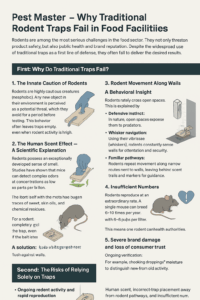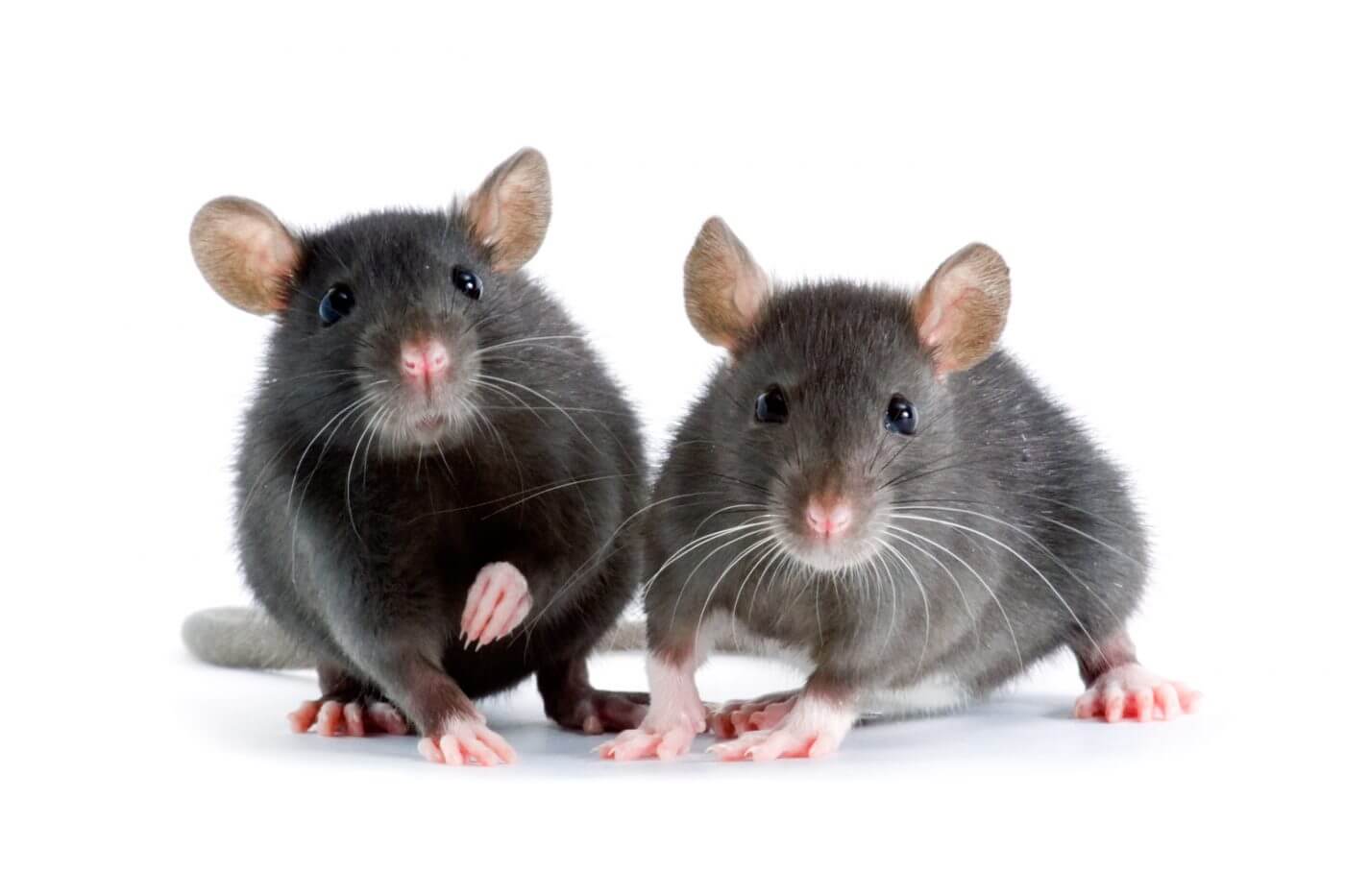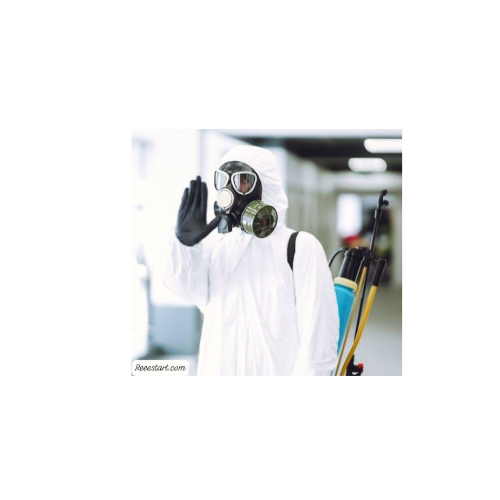Why Do Traditional Rodent Traps Fail in Food Facilities?
The Comprehensive Guide to Smart and Integrated Rodent Management
Introduction
Rodents are among the most serious challenges in the food sector. They not only threaten product safety, but also public health and brand reputation. Despite the widespread use of traditional traps as a first line of defense, they often fail to deliver the desired results.
A trap is merely a tool—what’s really needed is a comprehensive strategy.
First: Why Do Traditional Traps Fail?
1. The Innate Caution of Rodents
Rodents are highly cautious creatures (neophobic). Any new object in their environment is perceived as a potential threat, which they avoid for a period before testing. This behavior often leaves traps empty, even when rodent activity is high.
2. The Human Scent Effect – A Scientific Explanation
Rodents possess an exceptionally developed sense of smell. Studies have shown that mice can detect complex odors at concentrations as low as parts per billion.
When traps are handled with bare hands, they retain traces of sweat, skin oils, and chemical residues.
For a rodent, such unfamiliar odors signal danger in its environment.
The result: rodents completely avoid the trap, even if the bait inside is highly attractive.
👉 Scientific Solution:
Always wear cotton or rubber gloves when preparing traps.
Wipe or clean traps lightly before use to minimize foreign odors.
Use strong-scented bait materials that mask human odor traces.
3. Rodent Movement Along Walls – A Behavioral Insight
Rodents rarely cross open spaces. This is explained by:
Defensive instinct: In nature, open spaces expose them to predators.
Whisker navigation: Using their vibrissae (whiskers), rodents constantly sense walls for orientation and security.
Familiar pathways: Rodents repeat movement along narrow routes next to walls, leaving behind scent trails and markers for guidance.
Behavioral research has shown that rodents spend over 90% of their movement time along walls.
Therefore, placing traps in the middle of a room is a common mistake that leaves them outside the rodents’ natural pathways.
👉 Scientific Solution:
Always position traps flush against walls.
Secure traps so rodents must pass directly over or beside them.
Place dual-entry traps at corners to maximize capture opportunities.
4. Insufficient Numbers
Rodents reproduce at an extraordinary rate. A single mouse can breed 6–10 times per year, with 6–8 pups per litter.
This means one rodent can multiply into dozens within a matter of months.
Thus, one or two traps in a large food facility are nowhere near effective.
5. Alternative Food Sources
If open food sources or improper storage are available, rodents will always choose the easy food option instead of risking approaching a trap.
Second: The Risks of Relying Solely on Traps
Ongoing rodent activity and rapid reproduction.
Direct contamination of food and product loss.
Legal risks and fines from health authorities.
Severe brand damage and loss of consumer trust.
Third: Integrated Pest Management (IPM) – The Real Solution
The key lies in a holistic plan that starts from the outside and includes:
1. Sealing external openings: Even a crack the size of a coin can allow a full-grown mouse to enter.
2. Perimeter bait stations: A first line of defense to intercept intruders.
3. Glue traps and internal monitoring: To detect any residual activity indoors.
4. Sanitation management: Eliminating alternative food sources.
5. Ongoing verification: For example, checking droppings’ moisture to distinguish new from old activity.

Conclusion
Human scent, incorrect trap placement away from rodent pathways, and insufficient numbers—all contribute to making traditional traps little more than silent tools.
Success lies in scientifically understanding rodent behavior and implementing an integrated plan that begins outside the facility.
With this approach, food facilities can protect their products, safeguard their reputation, and maintain compliance with international standards such as HACCP and ISO 22000.
Without it, rodents will continue to move freely… while traps remain empty.




